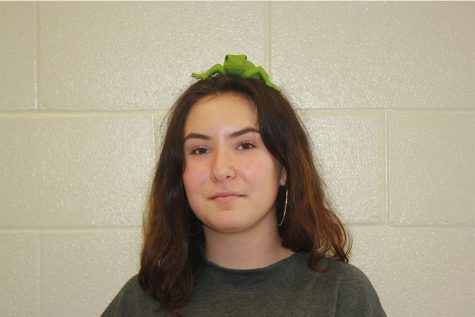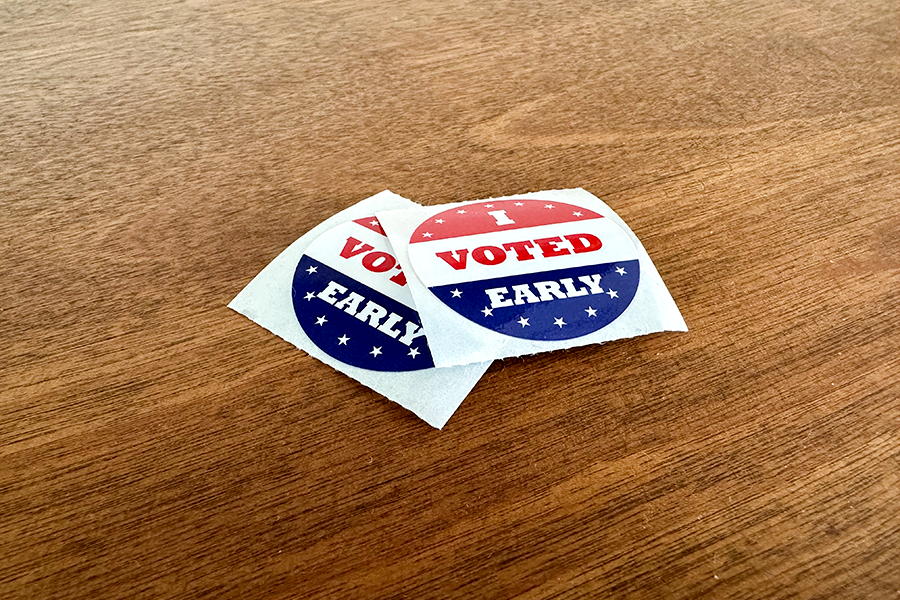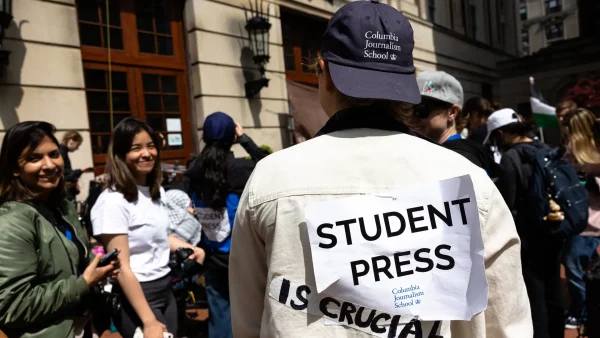South history sits on native land, now serves native community
South High School has been around for a long time. We hear about actors like Josh Hartnett, and athletes like Hassan Mead, an Olympic long distance runner, who have all graduated from South. However, South’s history is much more complex than famous alumni. Whole communities shape and have been shaped by South. For example, South sits on original Native land and now with the All Nations program serves the Native community. What happened in between? David “Bezh” Butler, the coordinator for All Nations, explained that South High is directly on the ancestral land of the Dakota people. Dakota people are the original people who lived on the land that is now Minnesota and they consider it as the site of the creation of their people. “When Ojibwe people came to this area in particular, we came from Northern Canada,” Butler said. The Ojibwe people were looking for “the food that grows on water,” or wild rice. Throughout the history of Minnesota as a state and as a territory, treaties between the U.S. government and Native groups such as the Dakota and Ojibwe have been controversial. After the U.S. forced the Dakota onto a tiny slice of land, the U.S.-Dakota war broke out and the Dakota were banished from Minnesota. Treaties also forced the Ojibwe onto small reservations, with no means of gathering food or farming. Native groups would have to depend on the government for welfare and commodity goods, which often came late if they arrived at all. “[The reservations] made us depend on welfare.” said Herman “and we started eating that food [that the government provided] that was just reeking of lard and oil.” Reservations also struggled with unemployment and as decades passed many families started leaving the reservations and heading to big cities.“Minneapolis and Saint Paul were being flooded, just flooded with Native Americans looking for work,” explained Herman. He continued and said that this started a domino effect on all the events that led up to the creation of the All Nations program. “My ancestors had meetings with their chiefs and the chiefs would say ‘Ok, you’re a young warrior you take your family out to this reservation and go find jobs,” said Herman. “You need to learn from the white man, because he took all of this because he didn’t understand nothing of what he was doing. Learn from him so he doesn’t take from us again.” Herman explained that when Native people went to go to college, they protested against the Vietnam War at the U of M in 1972, occupied Wounded Knee in 1973 and “on and on and on.” Wounded Knee was the site of a massacre of over 150 Native American people in 1890 on what is now the Pine Ridge Reservation. In 1973, the American Indian Movement (AIM) launched a 71-day occupation of Wounded Knee to call world attention to mistreatment from federal and local agencies towards the Native people. The occupation is seen as one of AIM’s greatest successes. Butler also explained the importance of knowing this Native history. “Well it’s a law.” Butler said with a laugh. And it is! There is a state educational standard that all Minnesota public schools must have some Native American history taught. “I would like to see a lot of different people’s history being told, and not just the Western version of it, or the American version of it.” Butler said “There’s plenty of other histories to be told; Chinese or Japanese, even various European histories… like how difficult it was for Irish people when they came here.” Butler explained that many people’s histories have not been historically taught and are assumed to be not important. “We know it’s important,” Butler explained “[Native American people] have a strong sense of who we are because we remember who we are.” “If you need to know who you are you just kinda have to look at your history.” Butler said “I think that a lot of people kind of missed that opportunity.” Herman went on to say “We graduated…. to become teachers, professors, knowledgeable. At this school we have at least eight professional staff who are Native.” Herman said that South High School recognized they had Native people in their community and wanted to do something about it. They contacted Herman, 29 years ago, and told him to “go out into the community and figure out what these people want.” “You got a school in Saint Paul, Red School House, and you got a place called Heart of the Earth. You got several different smaller schools, we want to take from what you’re teaching there, we want a school within a school.” explained Herman. “So we established the All Nations Program and that’s a whole other story.”
February 10, 2017
South High School has been around for a long time. We hear about actors like Josh Hartnett, and athletes like Hassan Mead, an Olympic long distance runner, who have all graduated from South. However, South’s history is much more complex than famous alumni. Whole communities shape and have been shaped by South. For example, South sits on original Native land and now with the All Nations program serves the Native community. What happened in between?
David “Bezh” Butler, the coordinator for All Nations, explained that South High is directly on the ancestral land of the Dakota people. Dakota people are the original people who lived on the land that is now Minnesota and they consider it as the site of the creation of their people.
“When Ojibwe people came to this area in particular, we came from Northern Canada,” Butler said. The Ojibwe people were looking for “the food that grows on water,” or wild rice.
Throughout the history of Minnesota as a state and as a territory, treaties between the U.S. government and Native groups such as the Dakota and Ojibwe have been controversial. After the U.S. forced the Dakota onto a tiny slice of land, the U.S.-Dakota war broke out and the Dakota were banished from Minnesota.
Treaties also forced the Ojibwe onto small reservations, with no means of gathering food or farming. Native groups would have to depend on the government for welfare and commodity goods, which often came late if they arrived at all.
“[The reservations] made us depend on welfare.” said Herman “and we started eating that food [that the government provided] that was just reeking of lard and oil.”
Reservations also struggled with unemployment and as decades passed many families started leaving the reservations and heading to big cities.“Minneapolis and Saint Paul were being flooded, just flooded with Native Americans looking for work,” explained Herman. He continued and said that this started a domino effect on all the events that led up to the creation of the All Nations program.
“My ancestors had meetings with their chiefs and the chiefs would say ‘Ok, you’re a young warrior you take your family out to this reservation and go find jobs,” said Herman. “You need to learn from the white man, because he took all of this because he didn’t understand nothing of what he was doing. Learn from him so he doesn’t take from us again.”
Herman explained that when Native people went to go to college, they protested against the Vietnam War at the U of M in 1972, occupied Wounded Knee in 1973 and “on and on and on.”
Wounded Knee was the site of a massacre of over 150 Native American people in 1890 on what is now the Pine Ridge Reservation. In 1973, the American Indian Movement (AIM) launched a 71-day occupation of Wounded Knee to call world attention to mistreatment from federal and local agencies towards the Native people. The occupation is seen as one of AIM’s greatest successes.
Butler also explained the importance of knowing this Native history. “Well it’s a law.” Butler said with a laugh. And it is! There is a state educational standard that all Minnesota public schools must have some Native American history taught. “I would like to see a lot of different people’s history being told, and not just the Western version of it, or the American version of it.” Butler said “There’s plenty of other histories to be told; Chinese or Japanese, even various European histories… like how difficult it was for Irish people when they came here.”
Butler explained that many people’s histories have not been historically taught and are assumed to be not important. “We know it’s important,” Butler explained “[Native American people] have a strong sense of who we are because we remember who we are.”
“If you need to know who you are you just kinda have to look at your history.” Butler said “I think that a lot of people kind of missed that opportunity.”
Herman went on to say “We graduated…. to become teachers, professors, knowledgeable. At this school we have at least eight professional staff who are Native.”
Herman said that South High School recognized they had Native people in their community and wanted to do something about it. They contacted Herman, 29 years ago, and told him to “go out into the community and figure out what these people want.”
“You got a school in Saint Paul, Red School House, and you got a place called Heart of the Earth. You got several different smaller schools, we want to take from what you’re teaching there, we want a school within a school.” explained Herman. “So we established the All Nations Program and that’s a whole other story.”

![South High School has been around for a long time. We hear about actors like Josh Hartnett, and athletes like Hassan Mead, an Olympic long distance runner, who have all graduated from South. However, South’s history is much more complex than famous alumni. Whole communities shape and have been shaped by South. For example, South sits on original Native land and now with the All Nations program serves the Native community. What happened in between?
David “Bezh” Butler, the coordinator for All Nations, explained that South High is directly on the ancestral land of the Dakota people. Dakota people are the original people who lived on the land that is now Minnesota and they consider it as the site of the creation of their people.
“When Ojibwe people came to this area in particular, we came from Northern Canada,” Butler said. The Ojibwe people were looking for “the food that grows on water,” or wild rice.
Throughout the history of Minnesota as a state and as a territory, treaties between the U.S. government and Native groups such as the Dakota and Ojibwe have been controversial. After the U.S. forced the Dakota onto a tiny slice of land, the U.S.-Dakota war broke out and the Dakota were banished from Minnesota.
Treaties also forced the Ojibwe onto small reservations, with no means of gathering food or farming. Native groups would have to depend on the government for welfare and commodity goods, which often came late if they arrived at all.
“[The reservations] made us depend on welfare.” said Herman “and we started eating that food [that the government provided] that was just reeking of lard and oil.”
Reservations also struggled with unemployment and as decades passed many families started leaving the reservations and heading to big cities.“Minneapolis and Saint Paul were being flooded, just flooded with Native Americans looking for work,” explained Herman. He continued and said that this started a domino effect on all the events that led up to the creation of the All Nations program.
“My ancestors had meetings with their chiefs and the chiefs would say ‘Ok, you’re a young warrior you take your family out to this reservation and go find jobs,” said Herman. “You need to learn from the white man, because he took all of this because he didn’t understand nothing of what he was doing. Learn from him so he doesn’t take from us again.”
Herman explained that when Native people went to go to college, they protested against the Vietnam War at the U of M in 1972, occupied Wounded Knee in 1973 and “on and on and on.”
Wounded Knee was the site of a massacre of over 150 Native American people in 1890 on what is now the Pine Ridge Reservation. In 1973, the American Indian Movement (AIM) launched a 71-day occupation of Wounded Knee to call world attention to mistreatment from federal and local agencies towards the Native people. The occupation is seen as one of AIM’s greatest successes.
Butler also explained the importance of knowing this Native history. “Well it’s a law.” Butler said with a laugh. And it is! There is a state educational standard that all Minnesota public schools must have some Native American history taught. “I would like to see a lot of different people’s history being told, and not just the Western version of it, or the American version of it.” Butler said “There’s plenty of other histories to be told; Chinese or Japanese, even various European histories... like how difficult it was for Irish people when they came here.”
Butler explained that many people’s histories have not been historically taught and are assumed to be not important. “We know it’s important,” Butler explained “[Native American people] have a strong sense of who we are because we remember who we are.”
“If you need to know who you are you just kinda have to look at your history.” Butler said “I think that a lot of people kind of missed that opportunity.”
Herman went on to say “We graduated…. to become teachers, professors, knowledgeable. At this school we have at least eight professional staff who are Native.”
Herman said that South High School recognized they had Native people in their community and wanted to do something about it. They contacted Herman, 29 years ago, and told him to “go out into the community and figure out what these people want.”
“You got a school in Saint Paul, Red School House, and you got a place called Heart of the Earth. You got several different smaller schools, we want to take from what you’re teaching there, we want a school within a school.” explained Herman. “So we established the All Nations Program and that’s a whole other story.”](https://www.shsoutherner.net/wp-content/uploads/2017/02/Map-processed-for-web-900x595.jpg)




